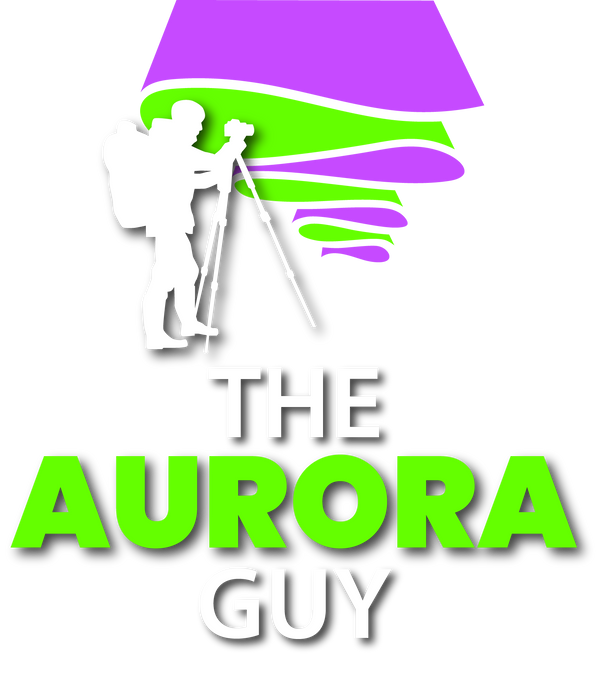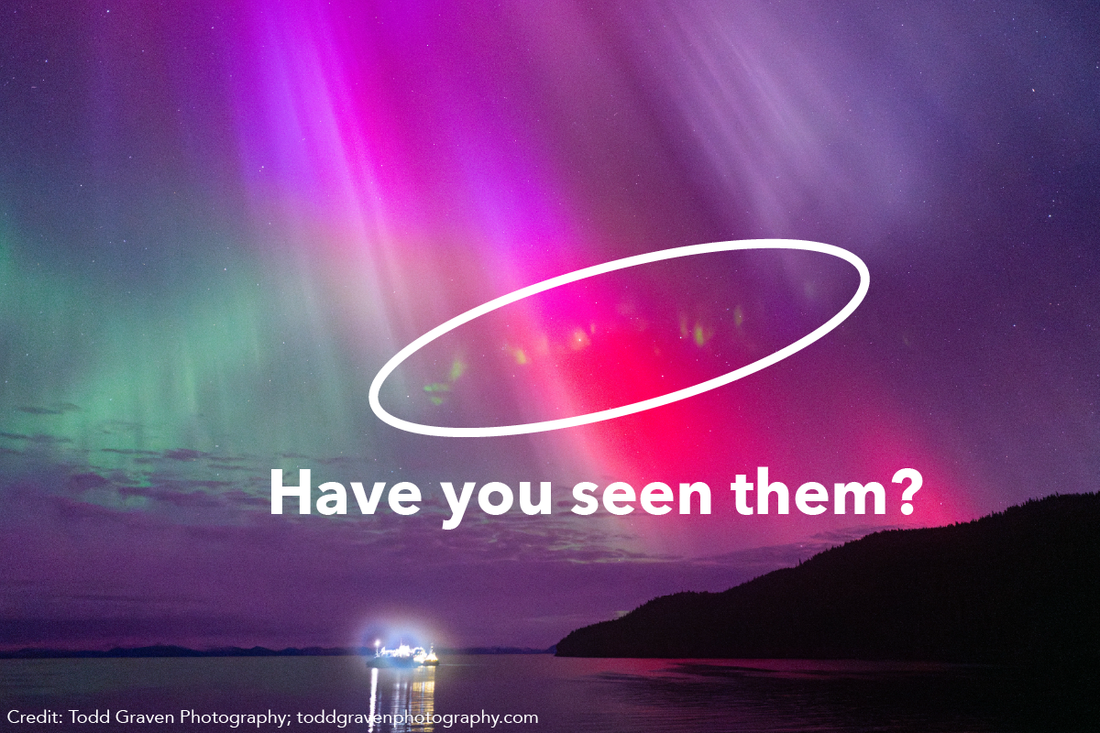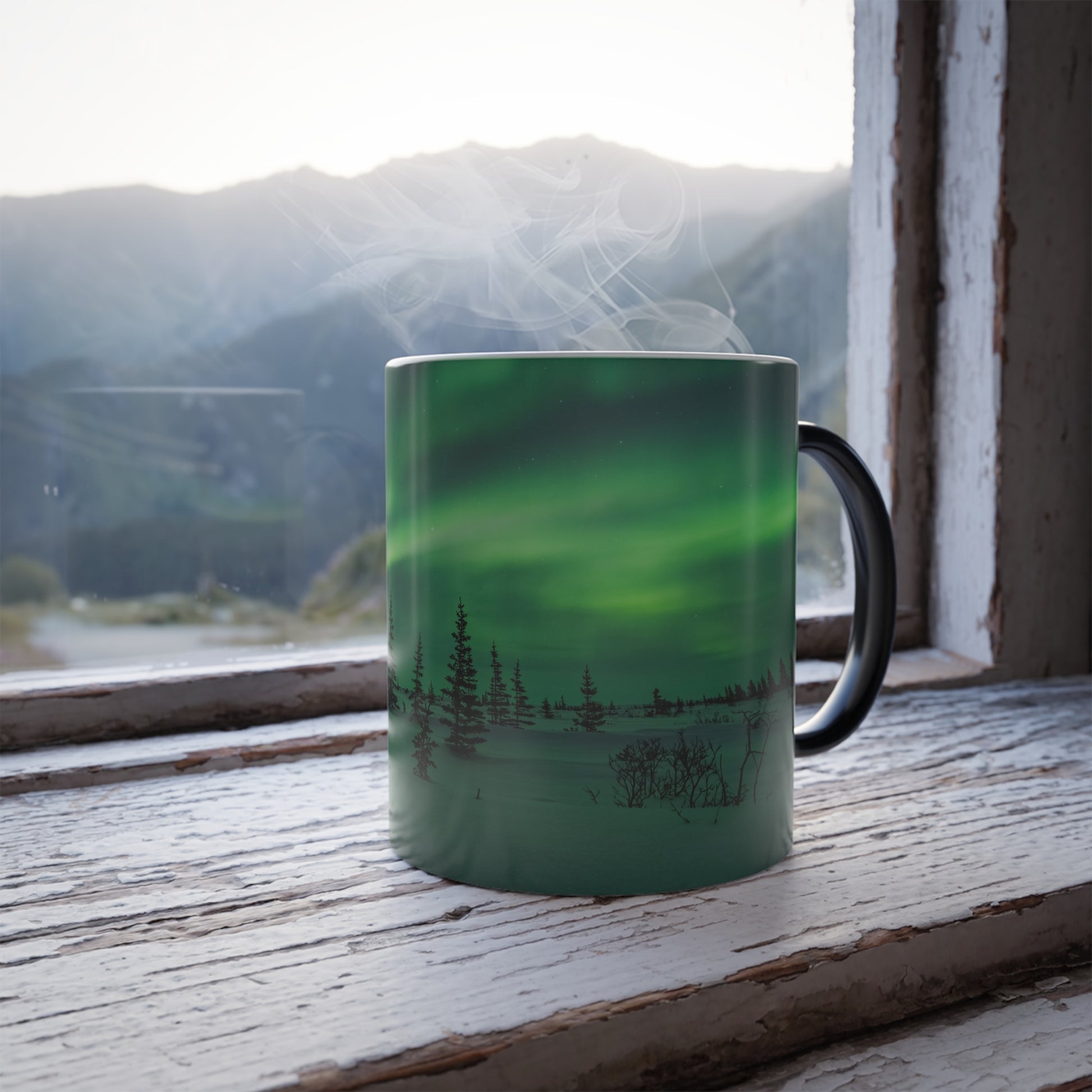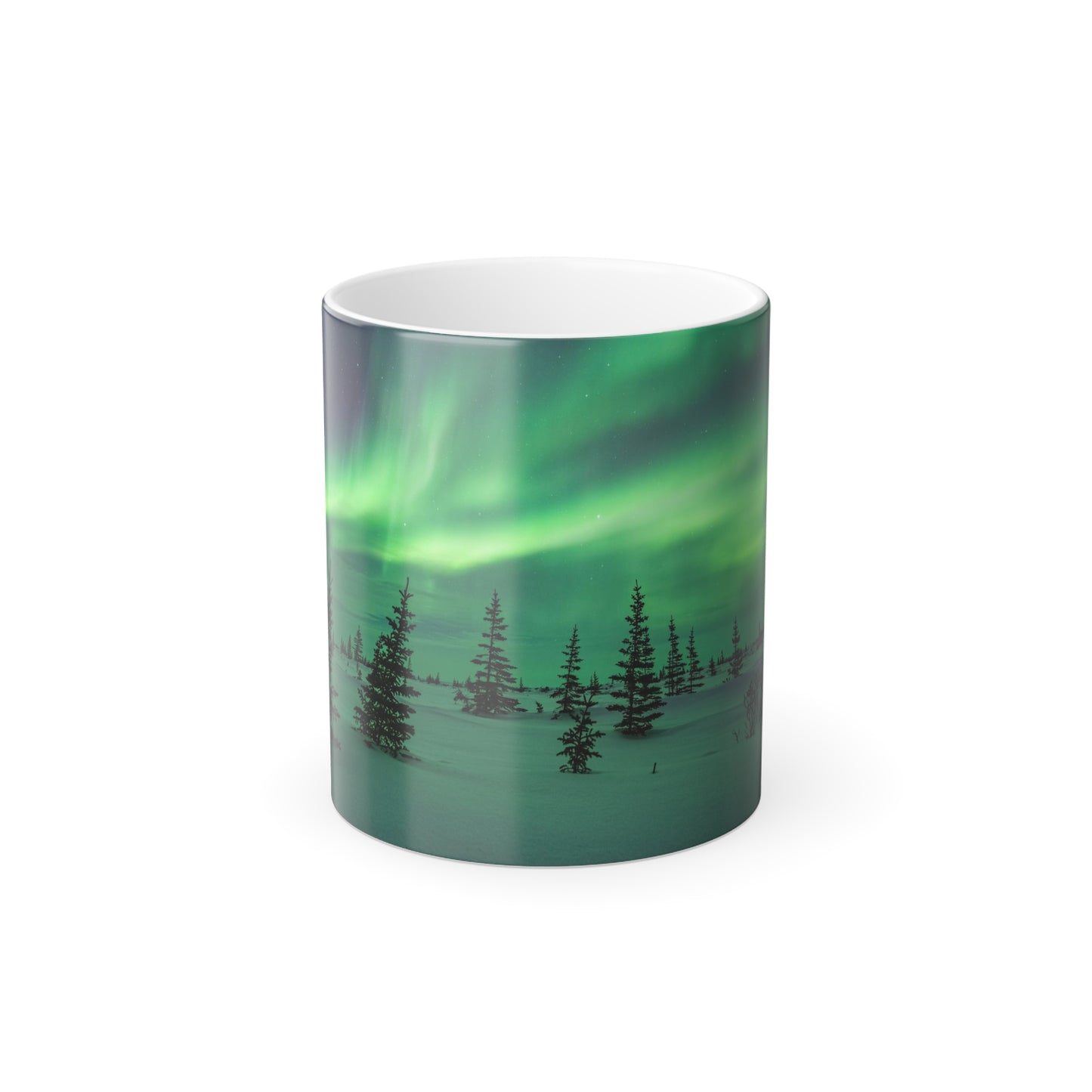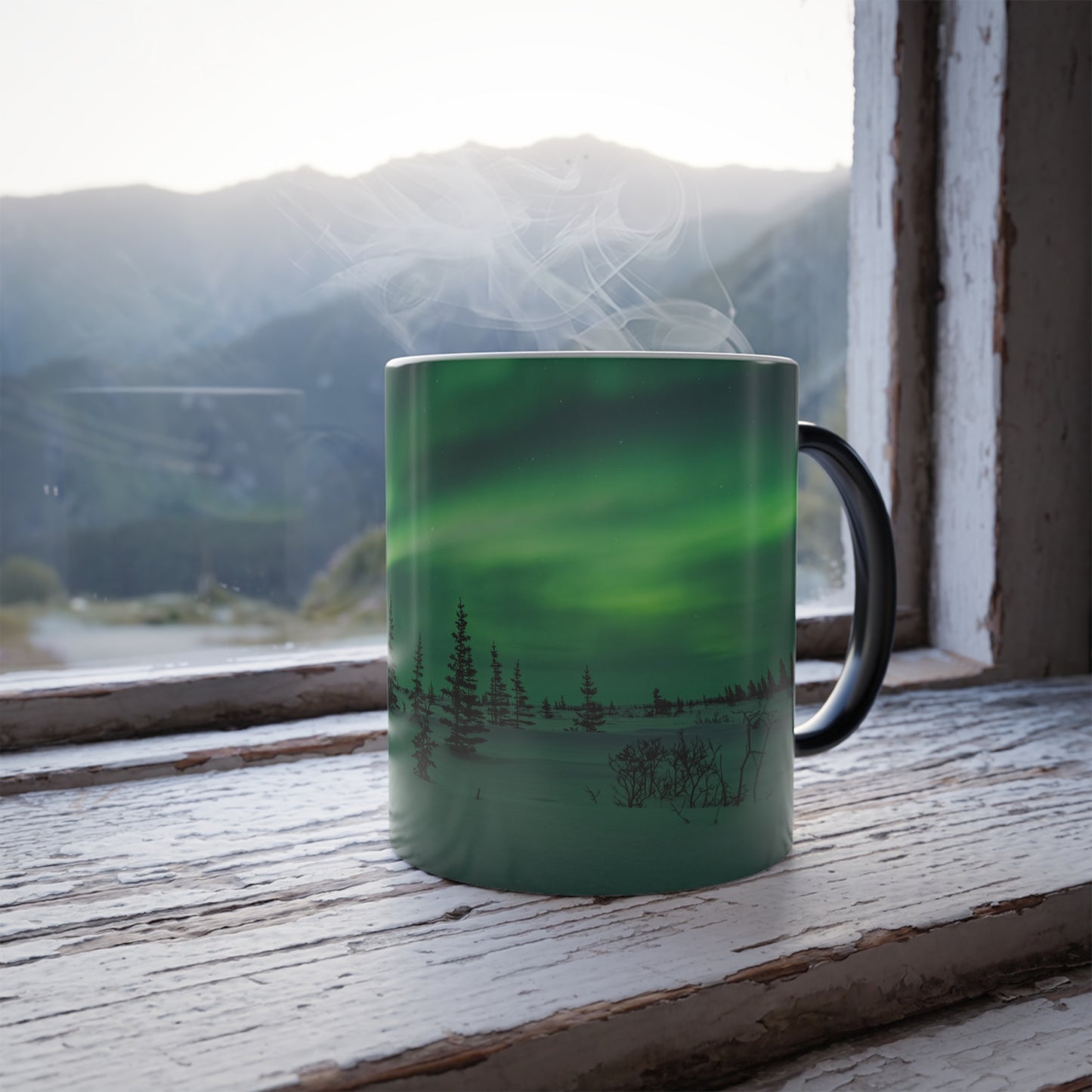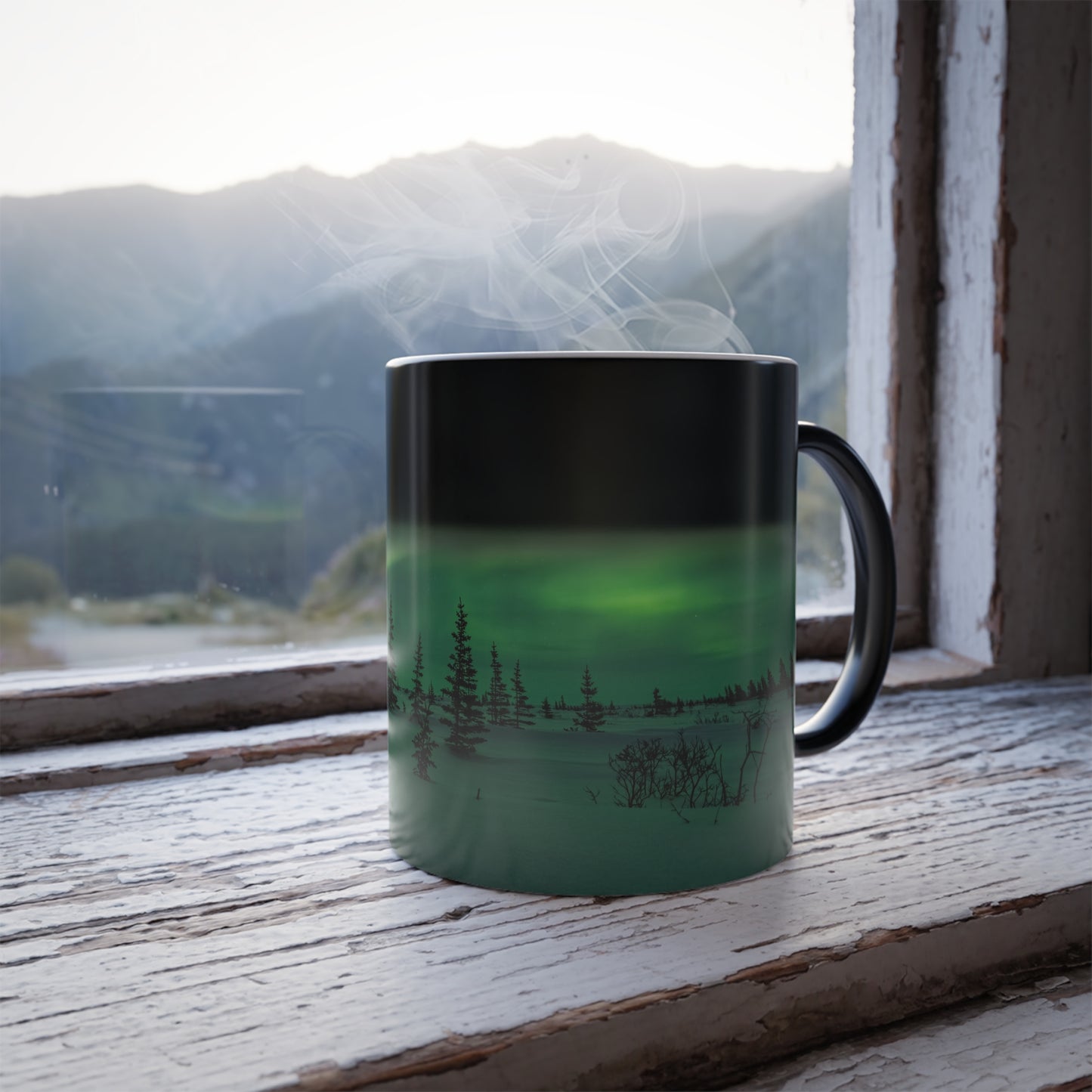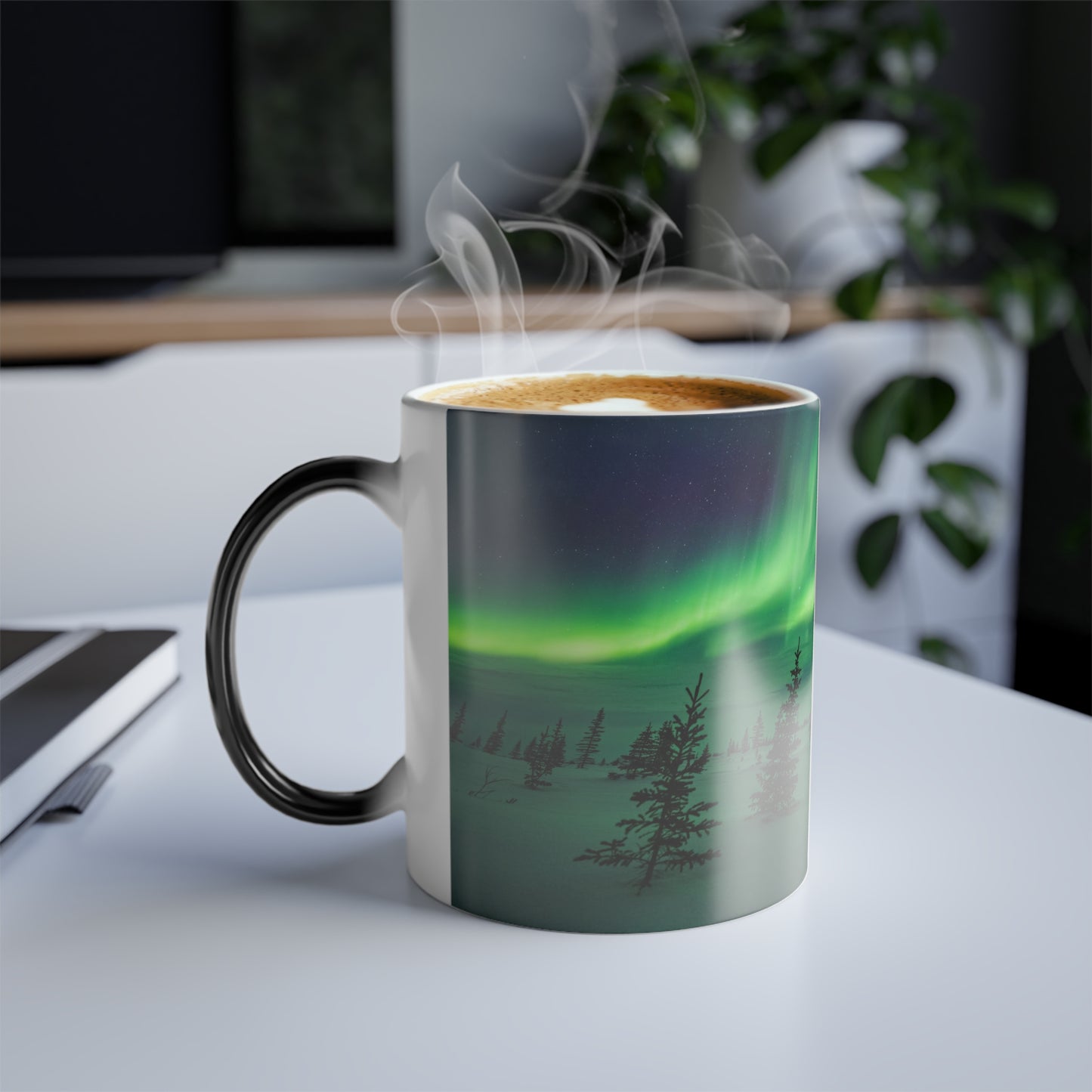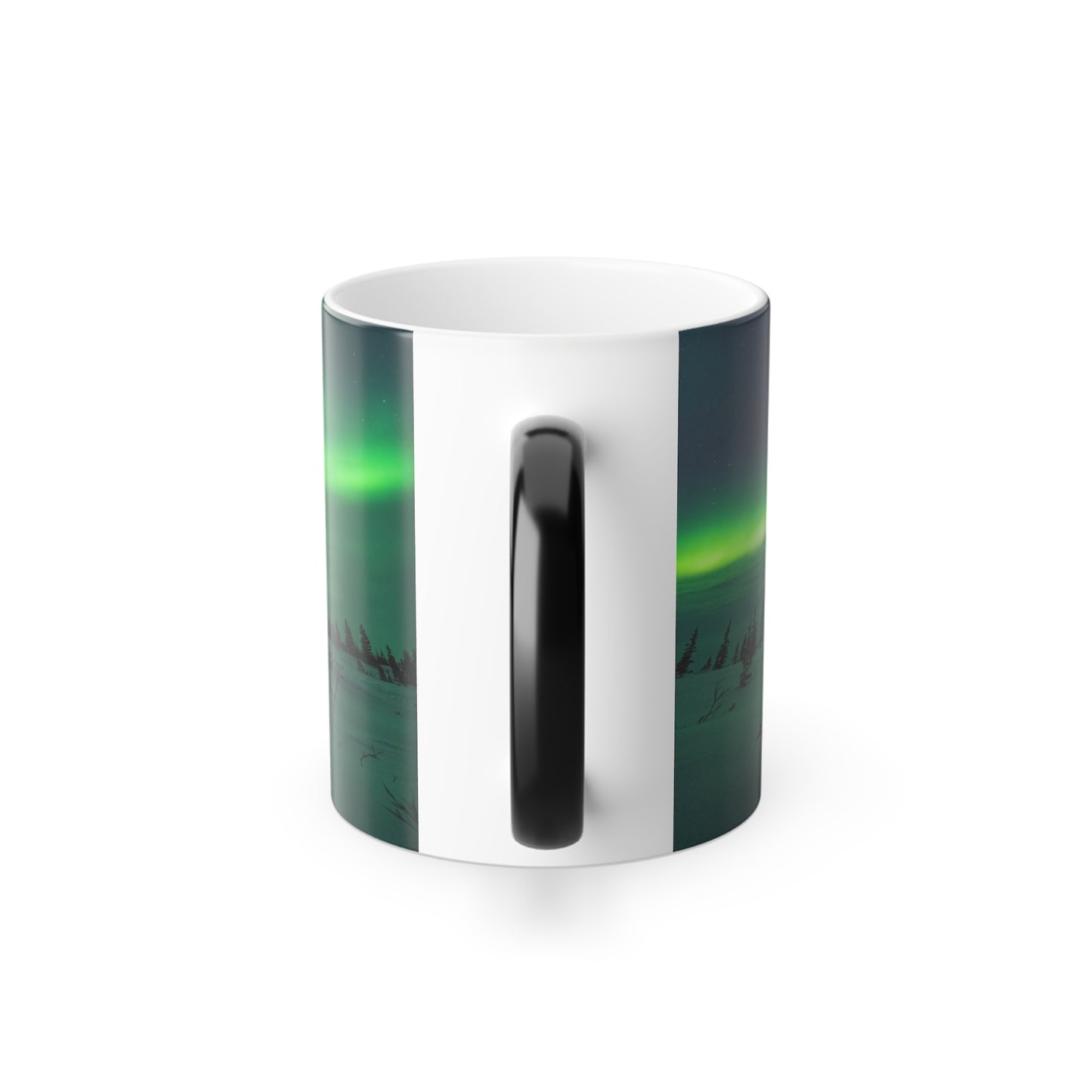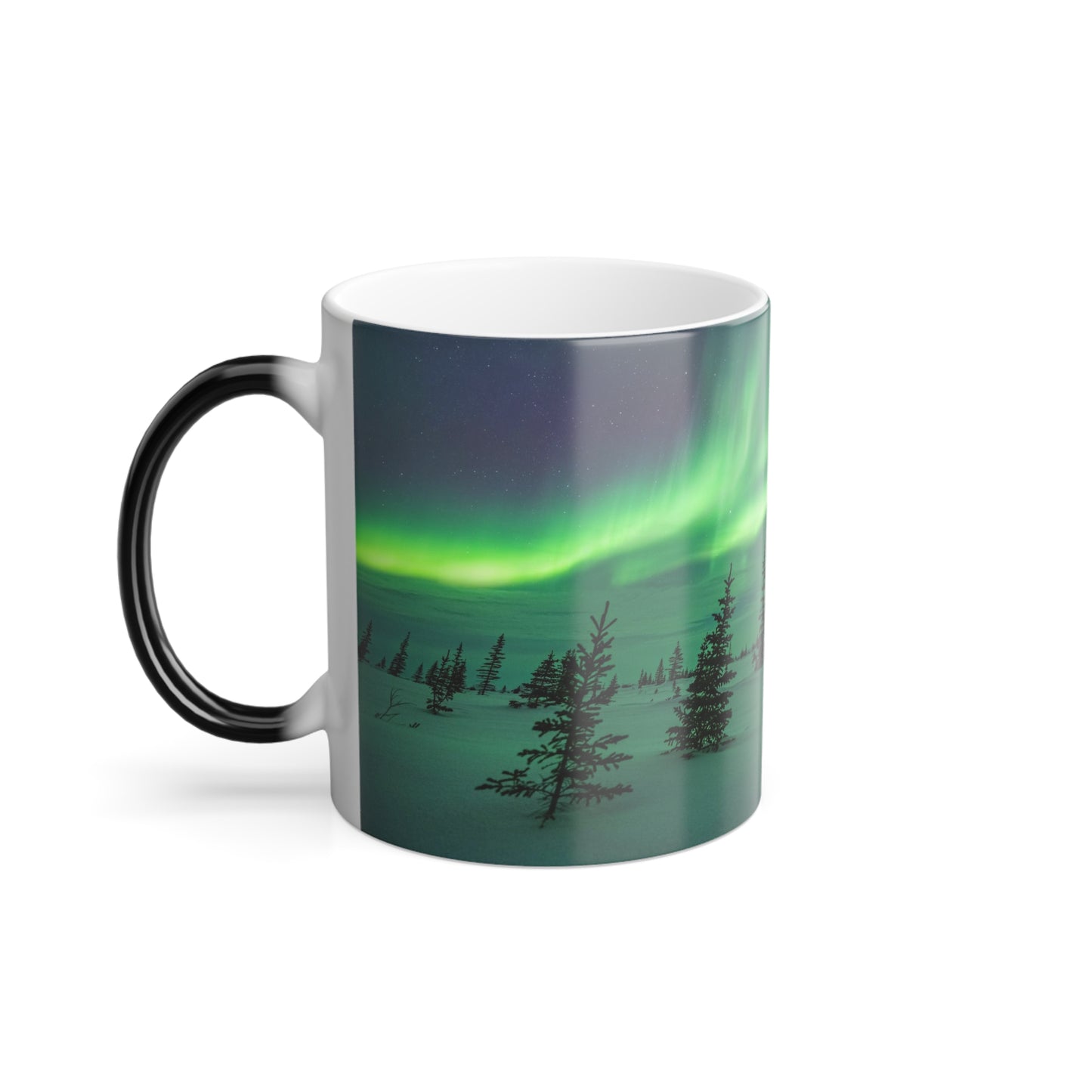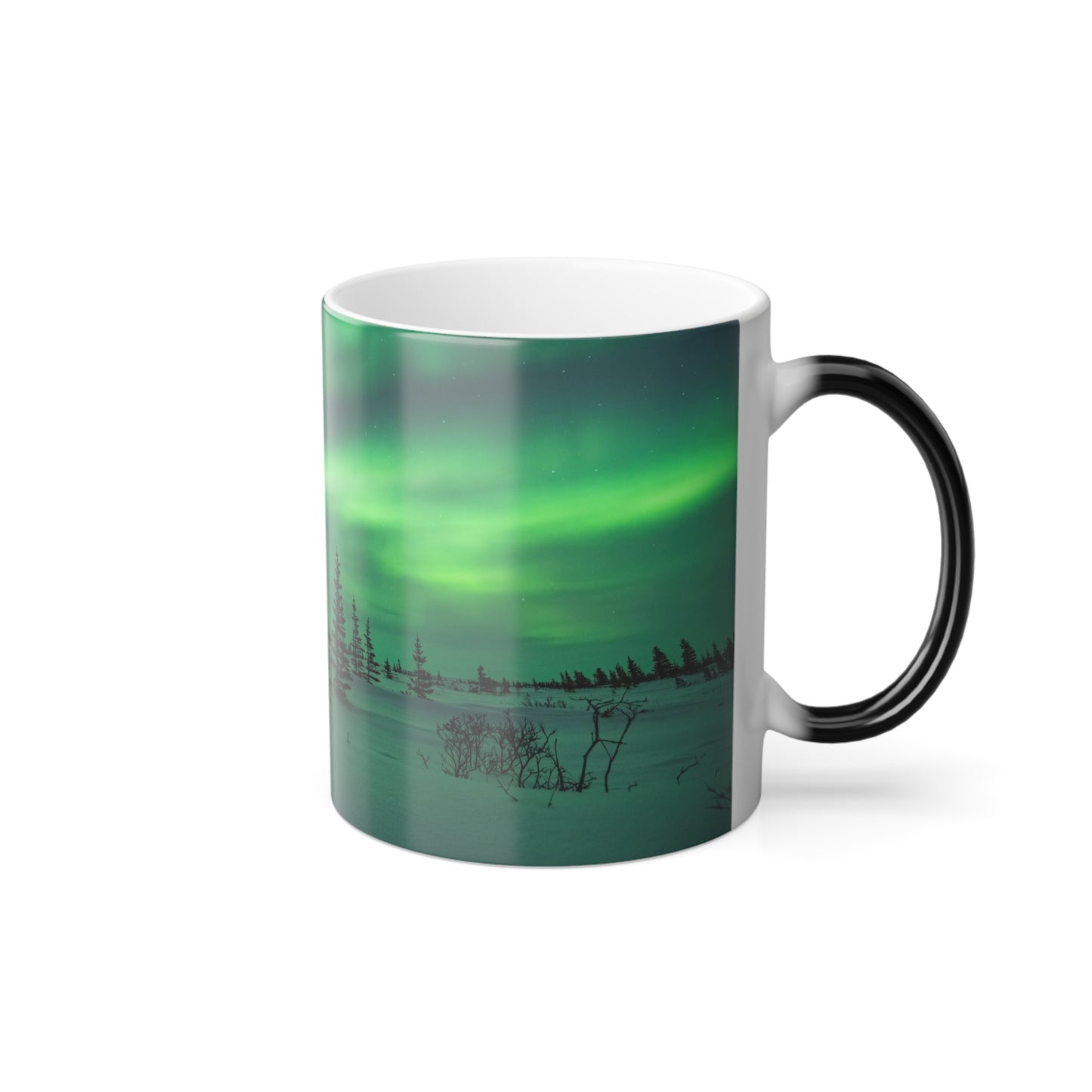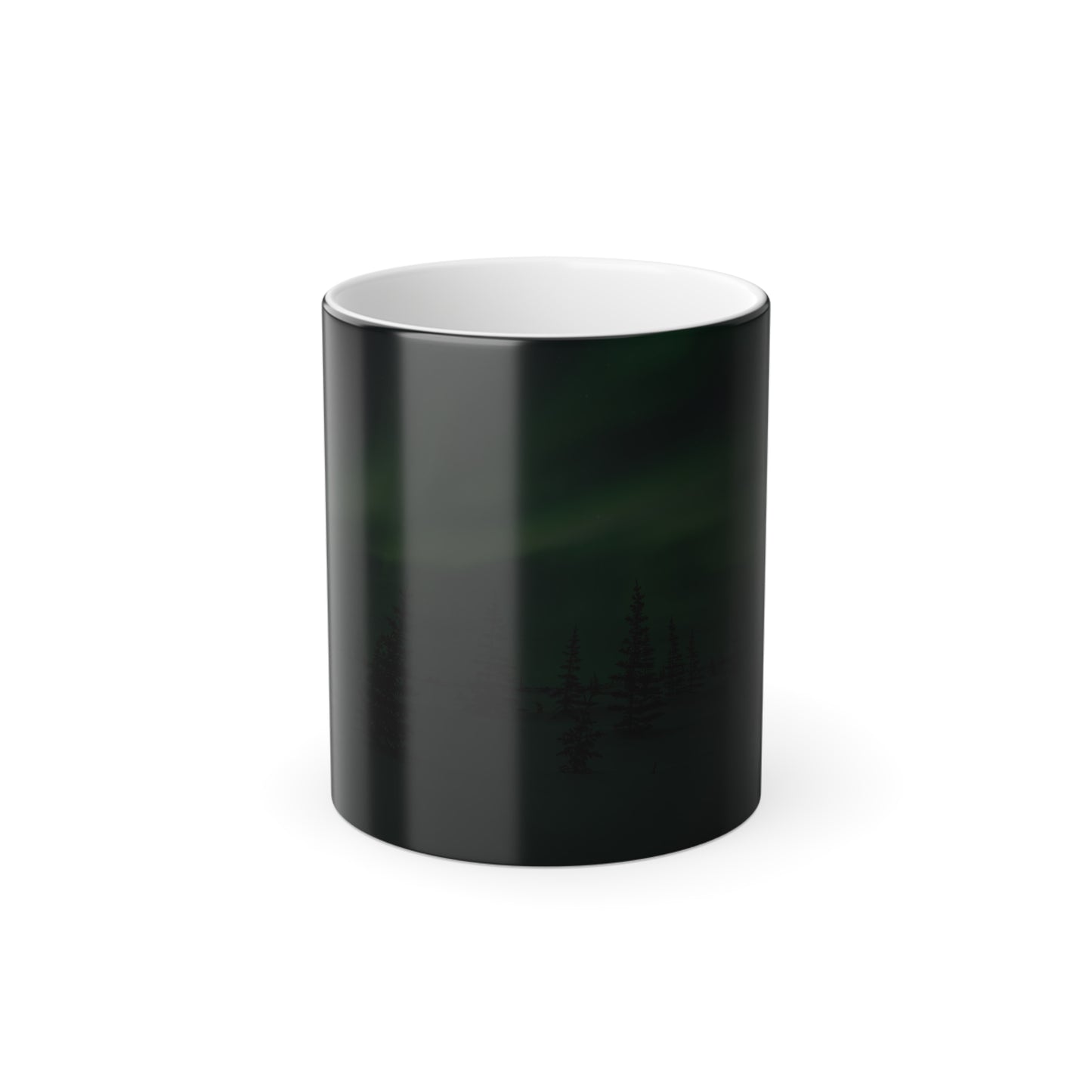It was the Fall 2023 American Geophysical Union meeting in Chicago. Dr. Emma Spanswick and Dr. Eric Donovan, auroral scientists from the University of Calgary, were giving a presentation on a new type of continuum (white-ish) aurora. They were showing examples which had been spotted in several Canadian all-sky cameras. One of them called “snow off a mountain” caught my eye. Right beside the continuum aurora, a pattern of green fragment aurora-like blobs appeared for just a few frames. As an aurora chaser, I know when something in the aurora looks “weird,” and this was weird. It turned out that these scientists had shown images of a rare phenomenon called Fragmented Aurora-Like Emissions.
Fragmented Auroral Emissions as seen on the University of Calgary's TREx all-sky camera in Rabbit Lake, SK. You can also see a white-ish "snow off a mountain" aurora. This video was presented during a conference in 2023 and more examples of this white-ish aurora-like form are published in a Nature paper authored by Dr. Spanswick and others. Some of the examples show FAEs like the one above. Video Credit: UofC, CFI, CSA.
Fragmented Aurora-Like Emissions (FAEs) are rare blob-like auroral forms that have received little attention until recently. While the first observations of FAEs may have been recorded long before modern times, the first scientific papers describing these ephemeral streaks were published in 2021 [1] [2]. These papers investigated FAEs with scientific-grade all-sky imagers in Svalbard, defining what these mysterious green lights were. They are known to be small, green blobs of aurora similar to the appearance of the streaks below STEVE’s picket fence (Don’t know what those are? Check out this article to learn more). These green blobs are around a few kilometers in size, much smaller than typical features in the aurora, and only last for a few minutes on average. While there are some theories, currently, there is no consensus on what causes FAEs and why they look so much like the streaks seen underneath STEVE’s picket fence.
Comparison of streaks and FAEs. Picket fence image credit: Stephen Voss from Semeter et al. (2020). Right image comes from Dreyer et al. (2021).
They can form during an auroral substorm, embedded within the aurora, alongside auroral arcs, or completely on their own! The fragments are not associated with the STEVE phenomenon, but they may be generated in the same way as STEVE’s streaks, often seen below the picket fence.
While the 2021 papers helped pin down a lot of information to define FAEs, one problem remains: the only modern observations come from Svalbard and from only one data source, so are these fragments exclusive to one frozen arctic archipelago off the coast of Norway, or could they also be seen in other places? One way to find out is by collecting observations of FAEs.
FAEs were introduced more widely to the aurora chasing community over the past couple years and more recently in early 2024. Citizen (participatory) scientists are now becoming more aware of these features. New observations have come in from northern Canada and Scandanavia, and spreading the word to northern communities has proved to be instrumental in finding more cases to study.
Image of FAEs captured by Tom Warner on an all-sky camera over northern Canada. Check out Tom's blog here. His YouTube channel is also a great resource!
Over the last three or so years, reports of fragments have trickled in from places like Iceland, Antarctica, and now over northern Canada. Many of these images were captured by aurora chasers in the field. But still, most of the observations from these places have occurred from poleward of the auroral ovals and were few and far between.
Remarkable real-time video of FAEs recorded by Olivier Stagier. Check out their website for more great nature photos and videos here!
Many properties of the FAE phenomenon are still a mystery to scientists. For example, the conditions under which the fragments appear. Understanding the circumstances of FAE appearances is important for understanding how and why they form. It is possible FAEs form under similar conditions as STEVE and the picket fence with streaks, but in a way where those conditions aren’t able to produce the characteristic continuum (white) emission seen in STEVE. Over Svalbard, early evidence shows that some fragments may appear with a small STEVE-like arc next to them. New research suggests there is a poleward STEVE “brother” (although it looks different compared to the small STEVE-like arcs in Svalbard).
STEVE's twin brother captured on an all-sky camera in northern Europe. Photo from Nanjo et al. 2024. Check out this new research, here.
Maybe STEVE's brother is part of a larger STEVE family of auroral phenomena that we are just beginning to know better. Maybe one of STEVE’s family members is associated with the FAEs! Whatever the situation, in order to study fragments in more depth, we need more observations, and this is where we need your help!
There is a new age in auroral science.
The way aurora science is being done is changing. Aurora chasers, photographers, and skywatchers are getting involved in real, hardcore research, collaborating with scientists to learn new things about our night sky. In 2017, the formation now dubbed “STEVE” was noticed by photographers in the Alberta Aurora Chasers online community. Collaborating with scientists, the first modern paper on STEVE was published. The story went viral, and citizen science was in the spotlight. Now, the community is investigating a zoo of rare auroral forms such as RAGDA (Red Aurora with Green Diffuse Arc), dunes, the picket fence and their streaks, and one of the latest forms: FAEs. Previously well-known auroral formations have also received renewed interest such as SAR arcs (specifically their connection with the formation of STEVE) and proton aurora. While many of these phenomena may look or behave differently, they are all being investigated in collaboration with photographers - aurora chasers taking photos with ordinary cameras are making a difference in the space physics community.
How you can help!
The ISSI ARCTICS (Auroral Research Coordination: Towards Internationalised Citizen Science) team was formed in 2023 with the goal of leveraging citizen scientist capabilities in the pursuit to better understand rare auroral phenomena, including FAEs. I recently joined the team as an early career researcher, and it’s been a very rewarding experience collaborating with citizen scientists and researchers from around the world.
Group photo of all the ARCTICS team members at our June 2024 meeting in Bern, Switzerland! I'm in the very back towards the center! It was a great time.
The next breakthrough in FAEs will hopefully happen as we gather more sightings, and myself and the ARCTICS team are looking to collaborate with you! If you find any images or videos of these auroral forms in your archives, please submit them to the Skywarden citizen science platform (https://www.taivaanvahti.fi/). Skywarden helps track and document auroras from around the world and helps facilitate collaboration between researchers and aurora chasers. When you submit your sightings of FAEs, please try and be as accurate as possible with the observation time and location, and RAW/unedited files are always preferred along with the edited final copies! These images and videos will only be used for research, and your name will be appropriately attributed to any data used in publications moving forward.
Skywarden will allow you to submit sightings of aurora from the past. For a tutorial of how to submit a report with Skywarden, click this link (Finnish version here).
Also, if you have a question of if your photo contains FAEs, send me an email at vincent@theauroraguy.com.
We look forward to seeing your photos of FAEs. Dig deep and check your photos for these mysterious green aurora blobs!
Let’s discover FAEs together!
How to Take Photos of FAEs
Don’t have any photos of FAEs in the archives but want to make sure you can capture them going forward? FAEs are small and can move quickly, so a shorter-than-usual shutter speed can help freeze their motion and help keep fragments’ borders and edges well-defined. The exact shutter speed will depend on your lens and camera, but anything quicker than 5 seconds should be fine. FAEs are also small, on the order of a few kilometers in size. This means that a zoom lens might be useful to make the fragments look larger in frame. Aside from this special caveat on shutter speed, the normal rules of aurora photography apply.
Your Effort Matters
As someone who walks the line between aurora chaser and researcher (in training), I want to stress that the effort of citizen scientists is really driving this field forward. Your observations of FAEs will improve our understanding of these rare auroral forms and perhaps even complement our growing understanding of STEVE, the picket fence, and its streaks. I will keep you all in the loop regarding new discoveries as a result of this campaign, so stay tuned.
Acknowledgements
Thank you to Tanya Melnik for initial edits and guidance to steer the direction of this blog, Dr. Bea Gallardo-Lacourt of NASA’s Goddard Space Flight Center for reviewing the article, and Dr. Emma Spanswick, the University of Calgary, and the Canadian Space Agency for use of the TREx images.
